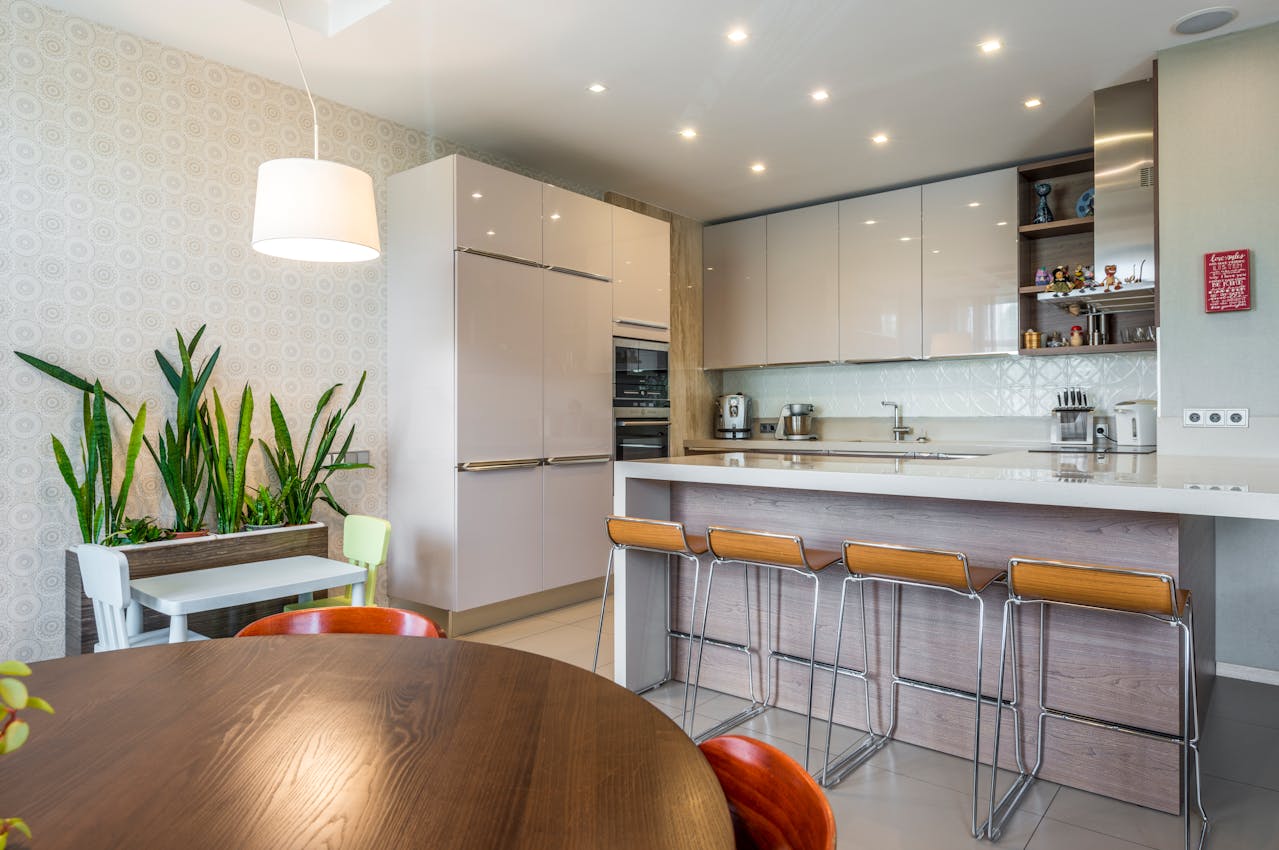The orientation of your house can significantly influence the amount of natural light that fills your kitchen. Whether your house faces north, south, east, or west, the direction determines how the sun’s rays will stream into your windows throughout the day. How you design your kitchen around this factor will radically change your experience of preparing meals, whether it’s a peaceful morning brew or a buzzing dinner with family. Understanding the impacts of your home’s orientation can help you optimize the use of natural light, potentially reducing your dependence on artificial lighting and saving on energy costs.
The Importance of Solar Orientation in Home Design
When you think about the design of your homes, you might consider factors like style, layout, and materials. However, one element that often gets overlooked is solar orientation. Solar orientation refers to the direction your house faces relative to the sun’s path across the sky. It is of particular importance when considering energy efficiency and natural lighting.
Also read : How can you make a galley kitchen more efficient and spacious?
A well-orientated house can make the most of the sun’s energy, providing natural light and warmth. Kitchen, being one of the most frequently used rooms in a house, can benefit from good orientation. It can reduce the need for artificial lighting, making it a more pleasant space while also helping to save on energy bills.
South-facing Homes and Kitchens
If your house has a south-facing orientation, you’re in luck. South-facing homes receive the most sunlight throughout the day in the northern hemisphere. This is because the sun is in the southern part of the sky for most of the day.
In parallel : What are the best practices for installing a kitchen backsplash?
For kitchens, a south-facing window can provide steady, bright light throughout the day. This can create a warm and inviting space for cooking and dining. However, it might be too intense during the summer months. Therefore, it’s crucial to consider shading solutions, such as overhangs or blinds, to control the amount of light entering.
East-facing Homes and Kitchens
An east-facing house, on the other hand, gets the most sunlight in the morning. If your kitchen is on the east side of your house, it will be filled with warm, energizing light as you start your day. This can be an excellent advantage if you love starting your day with a sunny breakfast.
However, the light will decrease throughout the day as the sun moves westwards. This means your kitchen might need additional lighting in the afternoon or evening. Using reflective surfaces can help to maximize the morning light and maintain a bright space throughout the day.
North-facing Homes and Kitchens
North-facing homes can be more challenging when it comes to natural lighting. In the northern hemisphere, they receive less direct sunlight throughout the day. This means that a north-facing kitchen may not get as much natural light as kitchens facing other directions.
However, this doesn’t mean north-facing kitchens are always dark and gloomy. The indirect light they receive can create a soft, diffused light effect that can be quite appealing. Additionally, choosing light colors for the kitchen walls and cabinets can help to reflect any available light and brighten up the space.
West-facing Homes and Kitchens
West-facing homes get strong afternoon and evening sun, which can create a warm and cozy atmosphere in your kitchen during dinner time. However, the afternoon sun can be quite glaring and hot during the summer months.
To manage this, you might consider installing blinds or curtains to control the amount of sunlight entering your kitchen. Also, using reflective materials and lighter colors can help to distribute the light more evenly and reduce the glare.
Understanding the orientation of your house and considering it in your kitchen design can make a significant difference. It can enhance natural lighting, create a more comfortable environment, and increase energy efficiency. So, next time you’re thinking about remodelling your kitchen or building a new house, don’t forget to consider which way your kitchen will be facing. It’s not just about the view; it’s about how the sun interacts with your space.
The Impact of House Orientation on Kitchen Design
As evident from the above, the orientation of your house significantly affects the amount of natural light your kitchen receives throughout the day. This, in turn, plays a crucial role in how you design your kitchen to optimise the use of this light.
A south-facing house, for instance, receives ample sunlight throughout the day, making it the most ideal for kitchens. However, it’s essential to incorporate shading solutions to control light intensity, especially during the summer months. On the other hand, an east-facing kitchen benefits from a warm, energising morning light, making it a perfect spot for sunny breakfasts. The trick, however, is to maximise this morning light through the use of reflective surfaces to maintain a bright space throughout the day.
North-facing homes pose a bit of a challenge due to the lesser direct sunlight they receive. However, with strategic use of light colours and reflective materials, a north-facing kitchen can still achieve a brightly lit space. West-facing kitchens, while they receive a strong afternoon and evening sun, need to be designed to manage the potential glare and heat.
Even beyond lighting, the orientation of your kitchen can impact its energy efficiency. A well-orientated kitchen can make the most of the winter sun, reducing dependence on artificial heating and thus, cutting down on energy bills.
Conclusion: Understanding Your House Orientation for an Efficient Kitchen Design
In conclusion, understanding the orientation of your house and how it affects the natural light that fills your kitchen is crucial. Whether your house is north, south, east, or west-facing, each orientation offers unique opportunities to enhance natural lighting and create a comfortable, energy-efficient kitchen.
Remember, it’s not just about the aesthetics. Good orientation can significantly improve energy efficiency, potentially reducing your dependence on artificial lighting and heating, and saving on energy costs. As you plan to remodel your kitchen or build a new one, consider the direction your kitchen will be facing. It’s not just about the view, but also how the sun interacts with your space.
The perfect kitchen design is a blend of many elements, with lighting being one of the most important. So, take a moment to appreciate the sun, consider its path across the sky and let it guide you to a brighter, warmer, and more energy-efficient kitchen.






